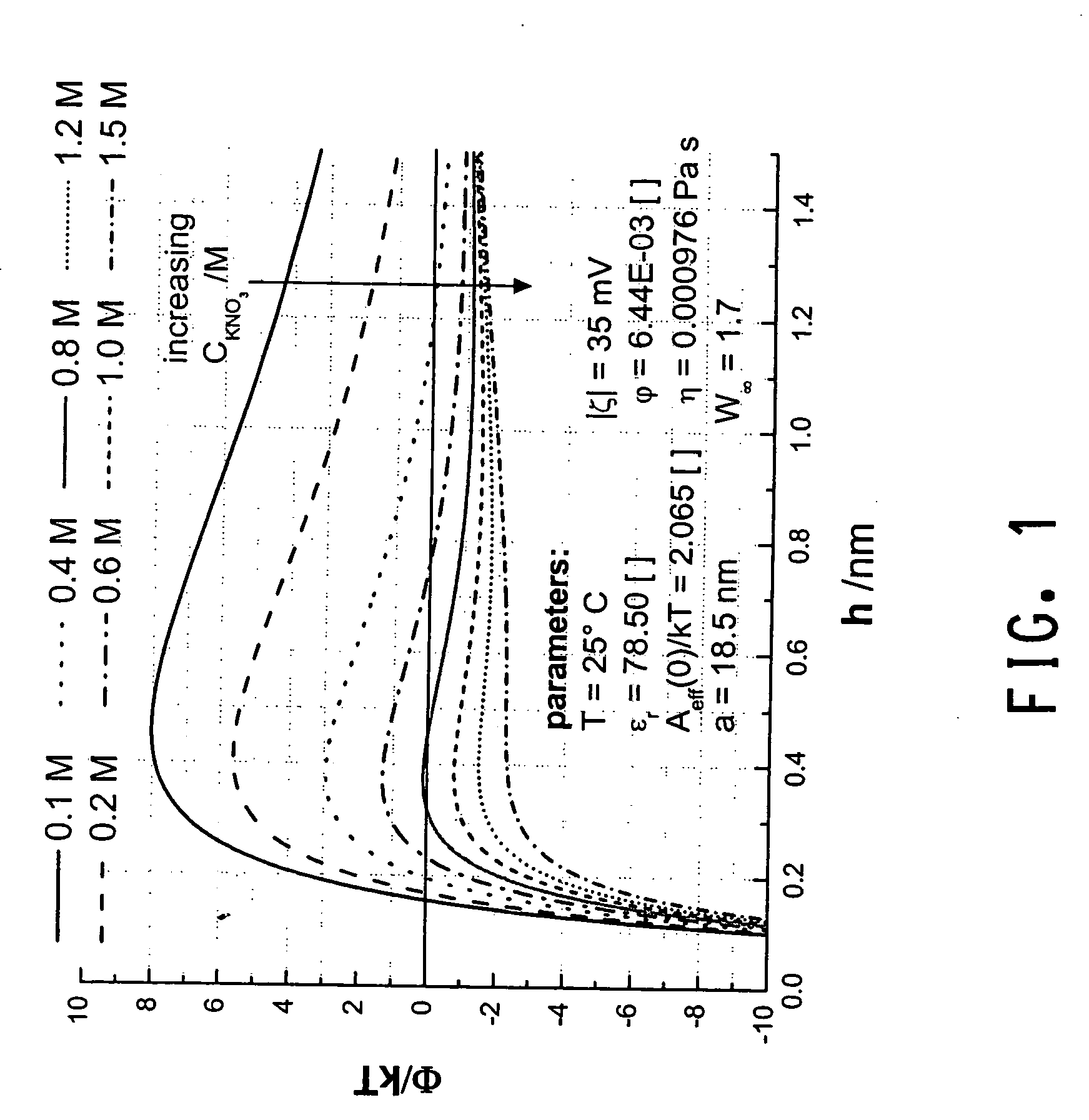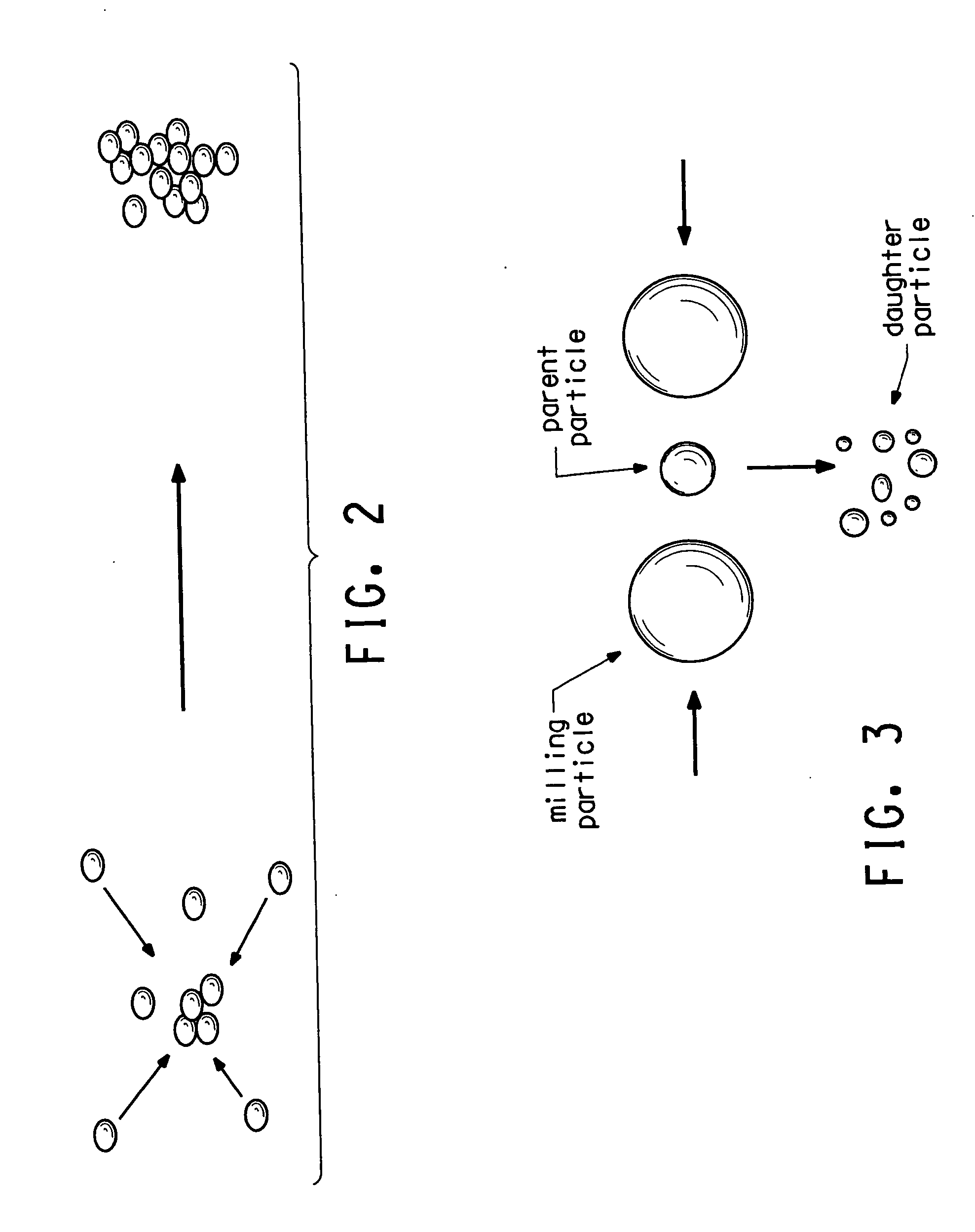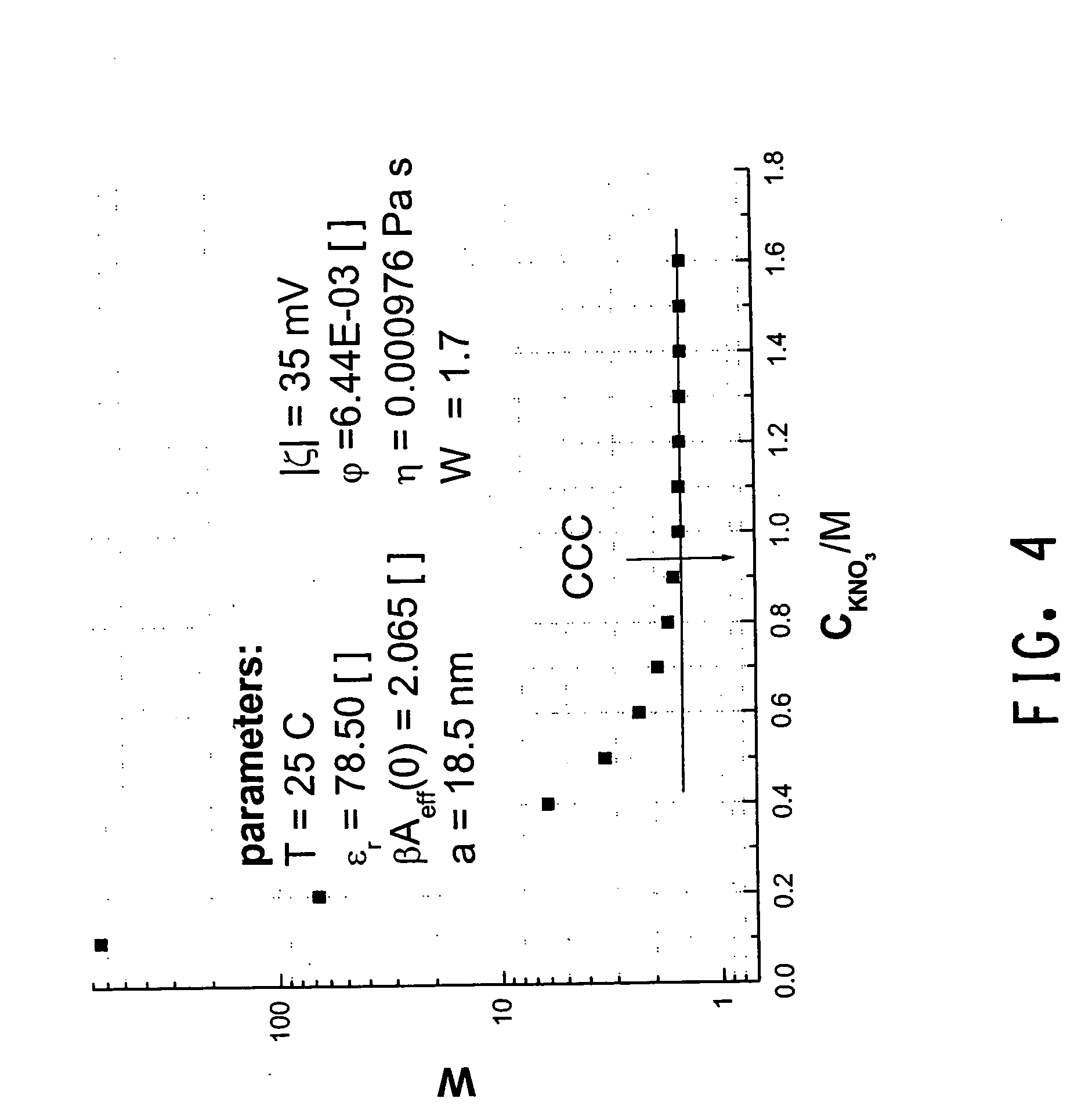Designed particle agglomeration
a technology of agglomeration and particles, applied in the field of agglomeration of particles, can solve the problems of complex structure, unstable dispersions of fine particles, and difficulty in processing,
- Summary
- Abstract
- Description
- Claims
- Application Information
AI Technical Summary
Benefits of technology
Problems solved by technology
Method used
Image
Examples
examples 1-4
Determination of Agglomeration Rate and Particle Size
example 1
[0084] The particle agglomeration rate at different shear stresses was measured by dynamic light scattering (DLS). The colloidal silica (Ludox TM-50) was diluted to 5 wt.% in aqueous KOH to a pH of 8.84 and 0.2 M KNO3 and the suspension sheared in a high shear rheometer at 1000 s−1 for this purpose. A sample of the suspension was drawn at different times and the size of the agglomerates was measured with DLS. Perikinetic agglomeration was also measured for each sample. The sizes of the agglomerates were stable without applied shear stress.
example 2
[0085] Example 1 is repeated with a salt concentration of 0.4 M KNO3 instead of a 0.2 M KNO3. At 0.4 M KNO3 the energy barrier ΔEin is much lower than the energy barrier at 0.2 M KNO3. The agglomeration rate is measured in the same way and is much faster.
PUM
| Property | Measurement | Unit |
|---|---|---|
| size | aaaaa | aaaaa |
| flow rate | aaaaa | aaaaa |
| particle size | aaaaa | aaaaa |
Abstract
Description
Claims
Application Information
 Login to View More
Login to View More - R&D
- Intellectual Property
- Life Sciences
- Materials
- Tech Scout
- Unparalleled Data Quality
- Higher Quality Content
- 60% Fewer Hallucinations
Browse by: Latest US Patents, China's latest patents, Technical Efficacy Thesaurus, Application Domain, Technology Topic, Popular Technical Reports.
© 2025 PatSnap. All rights reserved.Legal|Privacy policy|Modern Slavery Act Transparency Statement|Sitemap|About US| Contact US: help@patsnap.com



